Native to the Americas, the cougar is the second-largest big cat in the New World, after the jaguar.
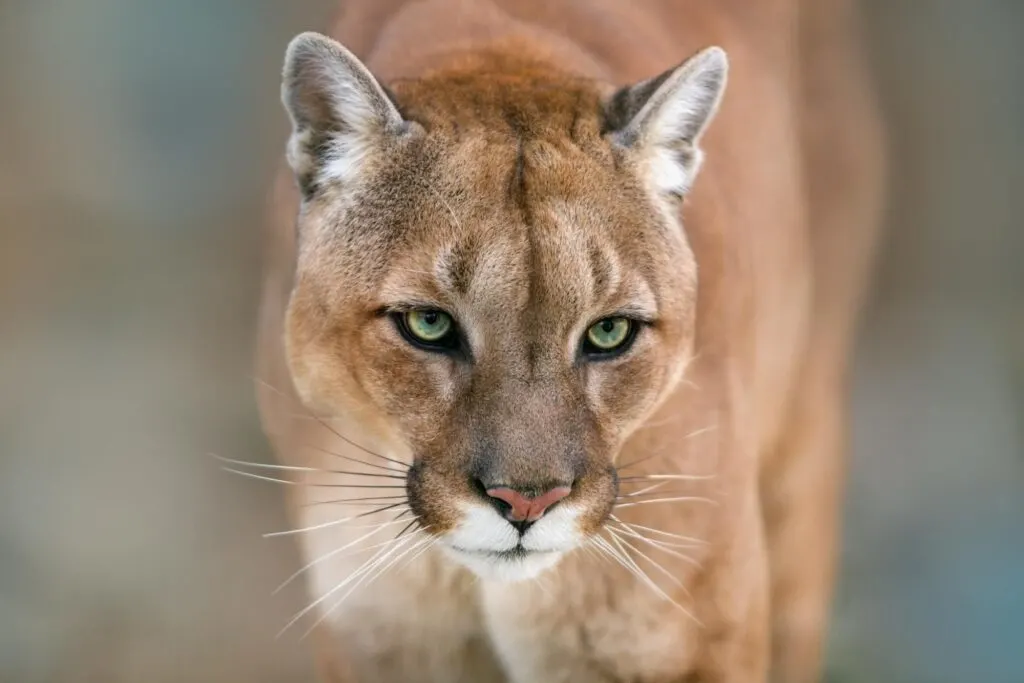
Cougar
Puma Concolor
Cougar Scientific Classification
- Kingdom: Animalia
- Phylum: Chordata
- Class: Mammalia
- Order: Carnivora
- Family: Felidae
- Genus: Puma
- Species: Puma concolor
Cougar Appearance
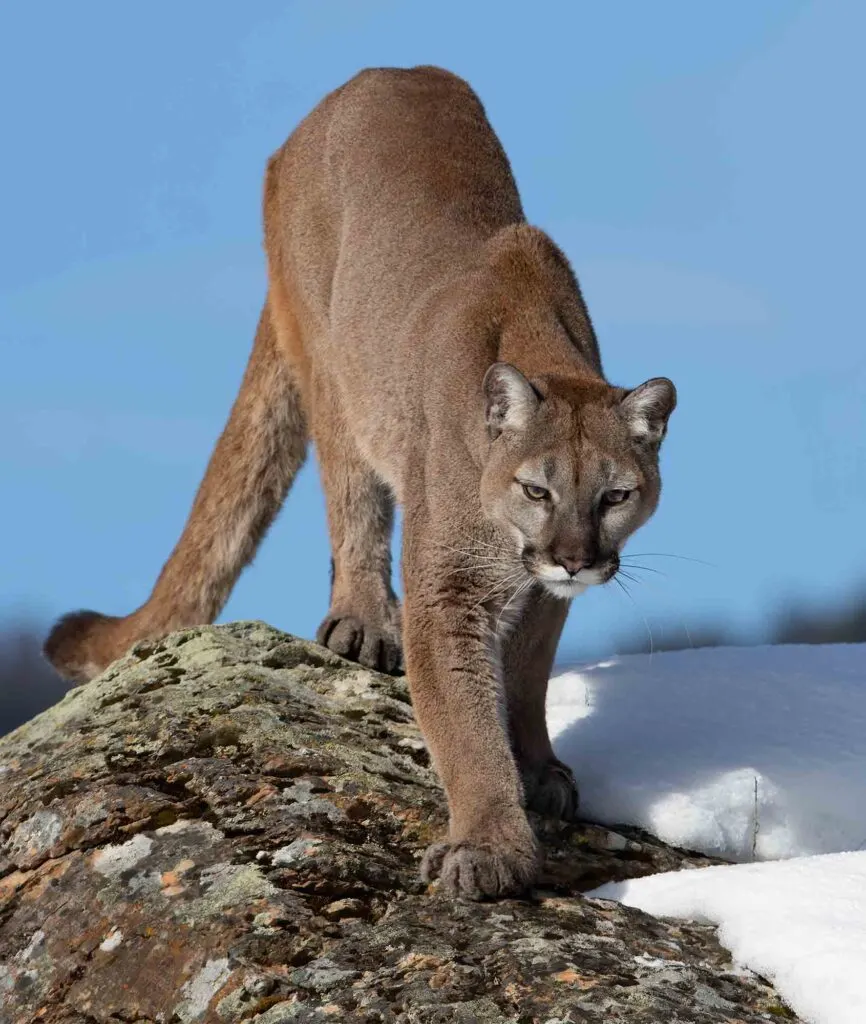
- Lifespan: 8-13 years
- Length: 6-7 feet
- Height: 24-35 inches
- Weight: 65-220 pounds
- Top speed: 50 mph
The coats of cougars are usually tawny, short, and coarse. However, it may vary from silvery-grey to reddish depending on the region.
There are lighter patches of fur on the underbelly, jaws, chin, and throat. They have pinkish noses with a black border extending to the lips.
Black stripes run across their muzzles, behind their ears, and the tips of their tails. The tail is one-third of the total body length. They have greyish brown to golden-colored eyes.
Cougars have long, slender, and muscular bodies. Their limbs are short, and their feet are broad. Cougars have a house cat’s body, but bigger.
Adult cougars are 24 to 35 inches tall. They measure about 6 to 7 feet in length, nose to tail tip. Males weigh roughly 117 to 220 pounds, while females are lighter at 65 to 140 pounds.
Cougars have large paws and strong hind legs that give them great leaping and running ability. They can leap as high as 18 feet and run at speeds of 40 to 50 mph, making them some of the fastest land animals.
Still, they are best adapted for short, powerful sprints rather than long chases.
Did you know? Cougars are the fourth-largest cat species in the world, only behind the tiger, lion, and jaguar.
Cougar Range & Habitat
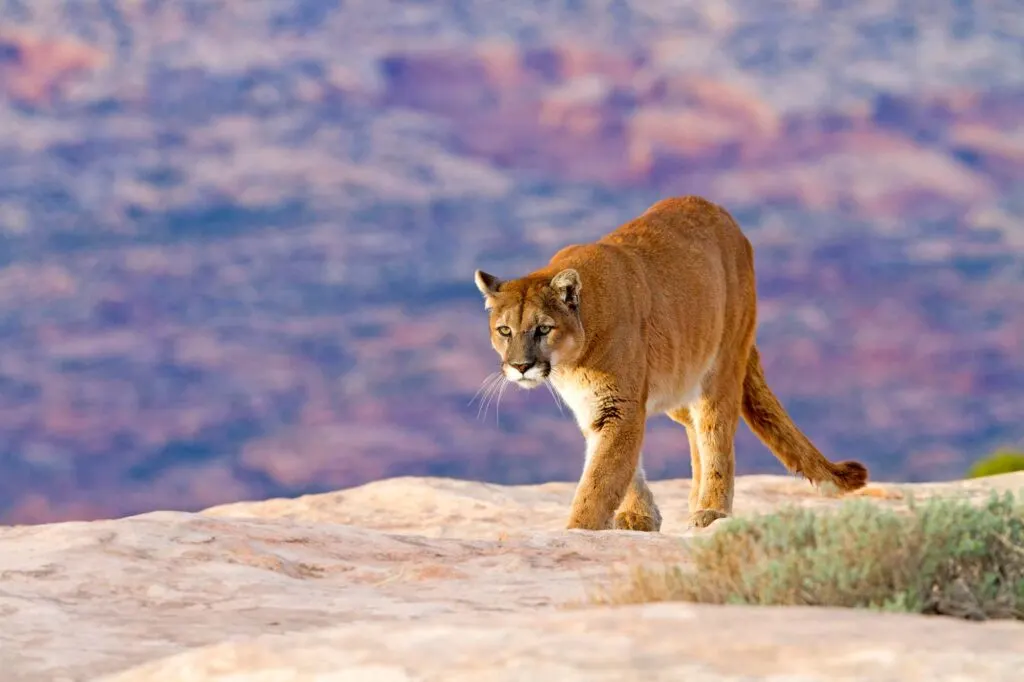
Cougars are spread across the American continent, but they are the biggest wild cats in North America. They can be found from the Canadian province of Yukon through the United States and south of Argentina.
Wild cougars are located in Argentina, Belize, Bolivia, Brazil, Chile, Colombia, Costa Rica, Ecuador, El Salvador, Guatemala, Guyana, Honduras, Nicaragua, Panama, Paraguay, Peru, Suriname, and Venezuela.
Cougars live in many environments like montane coniferous forests, steep canyons, grassland, swamps, lowland tropical forests, dry brush country, and areas that offer adequate cover and prey.
Distribution
- Continents: North America, Central America, South America
- Countries: Argentina; Belize; Bolivia; Brazil; Canada; Chile; Colombia; Costa Rica; Ecuador; El Salvador; French Guiana; Guatemala; Guyana; Honduras; Mexico; Nicaragua; Panama; Paraguay; Peru; Suriname; United States; Venezuela.
Habitats
Forest | Savanna | Shrubland | Grassland | Desert
Cougar Behavior and Lifestyle
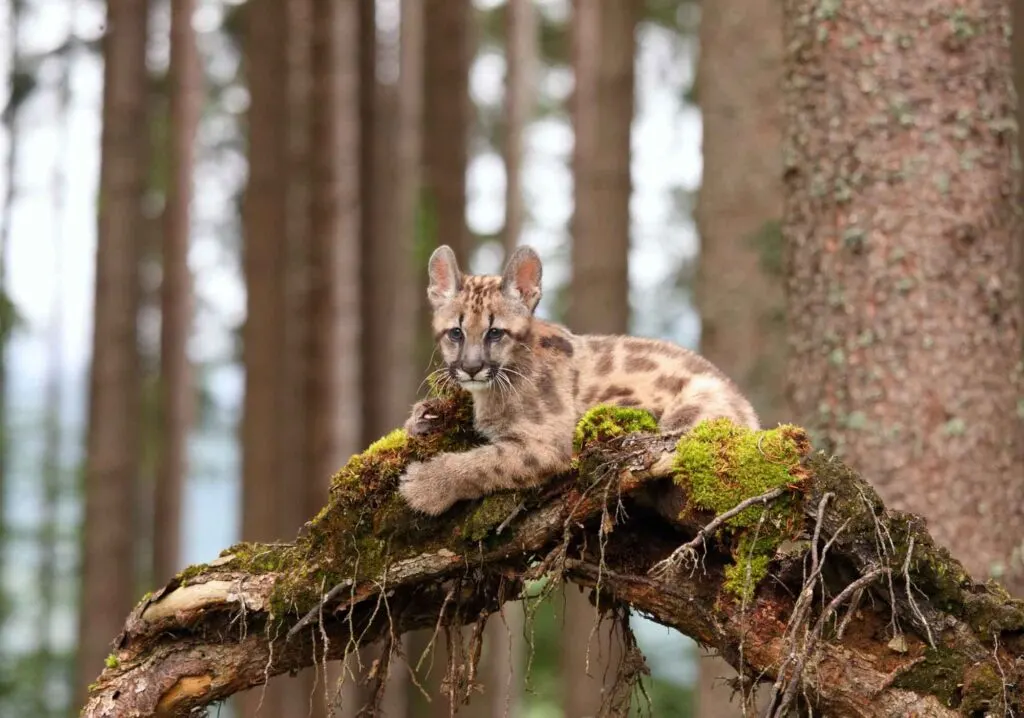
Mountain cougars are solitary and secretive animals but are rarely found sharing kills.
Usually, females will establish small communities around the territory of a strong male. Cougars living in this arrangement will socialize with one another.
Primarily, these cats are active at night. They communicate with each other through olfactory signals. Males will mark the land area with scrapes in the ground.
Cougars produce noises like hisses, growls, and bird-like whistles. They will migrate to different homes in the winters, in some areas.
Cougar Diet
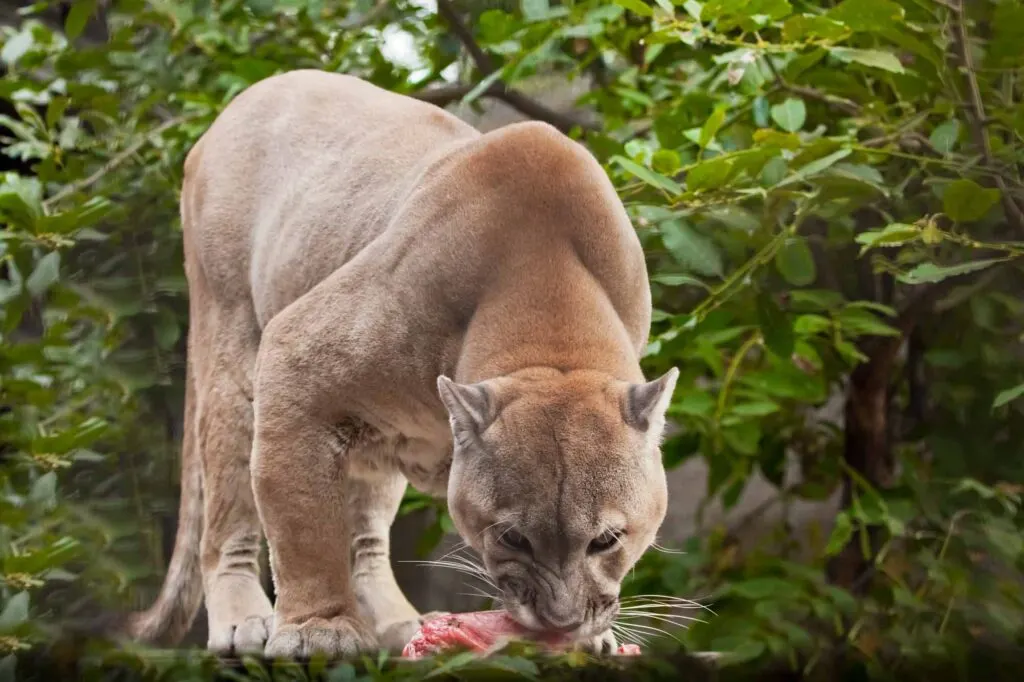
Cougars are carnivores that rely on big mammals for their nutrition. These big cats are not picky eaters and will eat anything they can find, also known as generalist predators.
They mainly hunt deer, coyotes, beavers, porcupines, mice, marmots, raccoons, hares, birds, and sometimes grasshoppers.
They may even prey on species of insects, mice, beavers, raccoons, rabbits, and wild turkeys. They will also consume domestic animals and livestock, such as poultry, sheep, calves, goats, and pigs. Predation by cougar on dogs is widespread but occurs at low frequencies.
However, reports of cougar attacks on humans are sporadic. The latest fatal attack was in 2018 in Washington, United States.
Cougars can sprint, but they are ambush hunters like the jaguar, leopard, lion, and tiger (other big cats). They will stalk their prey through the covers of bushes and trees.
Once they reach a comfortable distance, they will take a powerful leap and jump onto the back of their game. They deliver a decisive blow and suffocate their prey with a strong bite to the neck. A cougar’s bite is strong enough even to break the neck of a smaller game.
Cougars will kill one large mammal every two weeks to survive. After a successful kill, they will drag their food to a safe spot. Covering their kill with bushes and branches, they will return to feed after a few days.
Cougar Reproduction and Mating
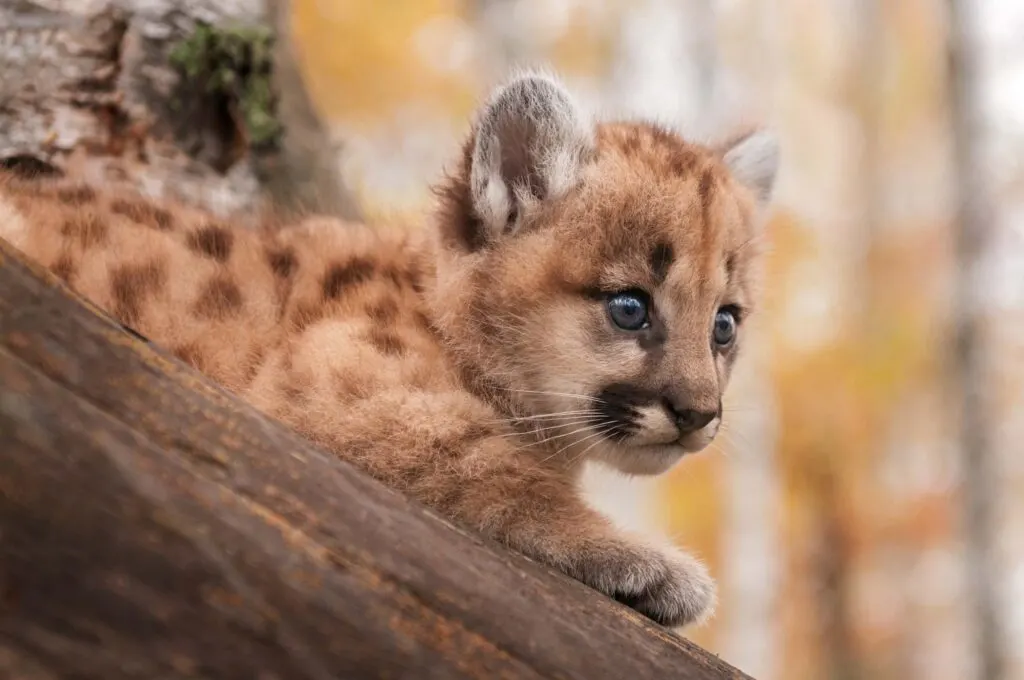
Cougars are polygamous and mate throughout the year. Females will give birth every other year, and their gestation period lasts for about 90 to 96 days.
Female cougars will choose a den and line it with soft vegetation and moss. A shelter is usually a protected place like crevices, thickets, caves, and rock shelters.
At a time, one to six kittens may be born. Only the mothers are involved in parenting. The kittens are born blind and are entirely dependent on their mothers.
They are weaned at three months of age and accompany their mothers in kills. After six months, they begin hunting small prey. Juvenile cougars remain with their mother for about two years.
Females reach sexual maturity at 2 to 2.5 years and males at three years.
Cougar Conservation Status
Least concern[1]
Cougar Predators and Threats
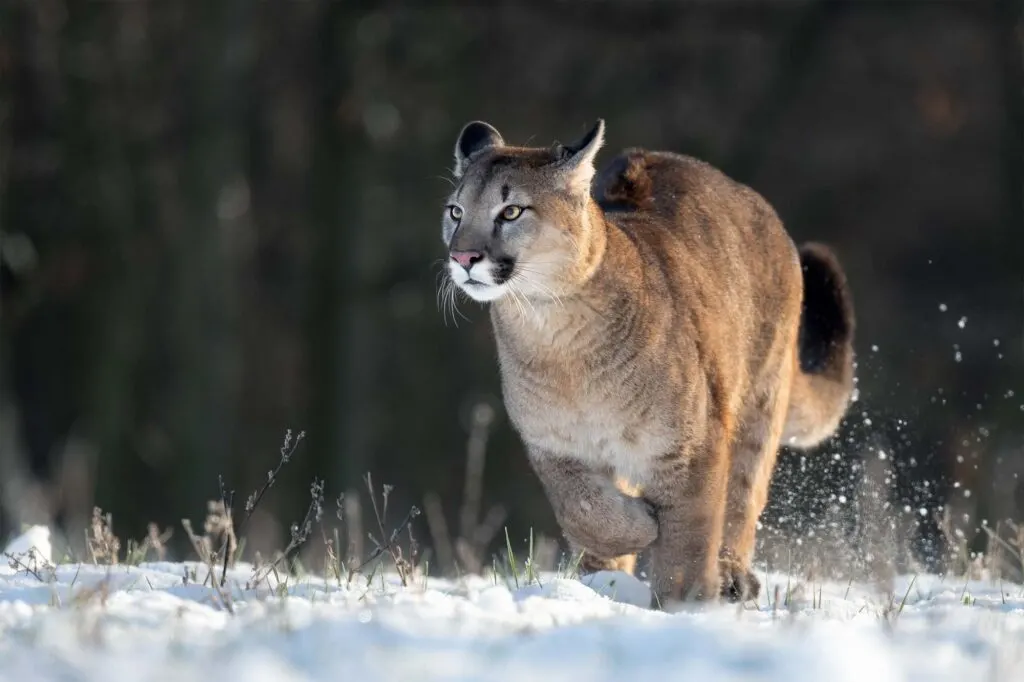
Cougar’s breeding population is estimated at less than 50,000 by the IUCN, with a declining trend.
Cougars are apex predators, so they are not hunted by most animals. Their biggest predators are humans, hunting and poaching cougars for sport.
In the wild, cougars may be attacked by wolf packs. Loss of habitat is also a concern to the survival of the cougar population.
Cougar Facts
Here are a few fun facts about cougars:
- Cougars cannot roar like lions. But, they make a roar-like sound similar to a human scream.
- Cougar is the fourth largest cat in the world and the second-largest cat in North America.
- Cougars have the most extensive range of any other wildland animal in the Americas.
- Cougars have powerful limbs and can leap up to 25 feet high.
- Cougars hold the Guinness record for having the most number of names. In English, cougars have 40 names. Some of these are: puma, mountain lion, mountain cat, catamount, and panther.
- Cougars have an ‘M-shaped’ pad on their paws.
- Cougar kittens are born with spots that help them hide. They lose these spots after about 10 months.
